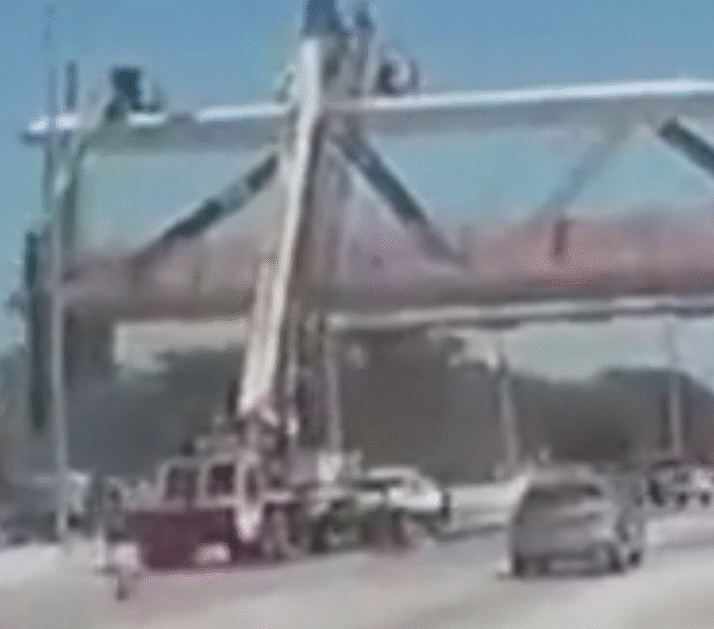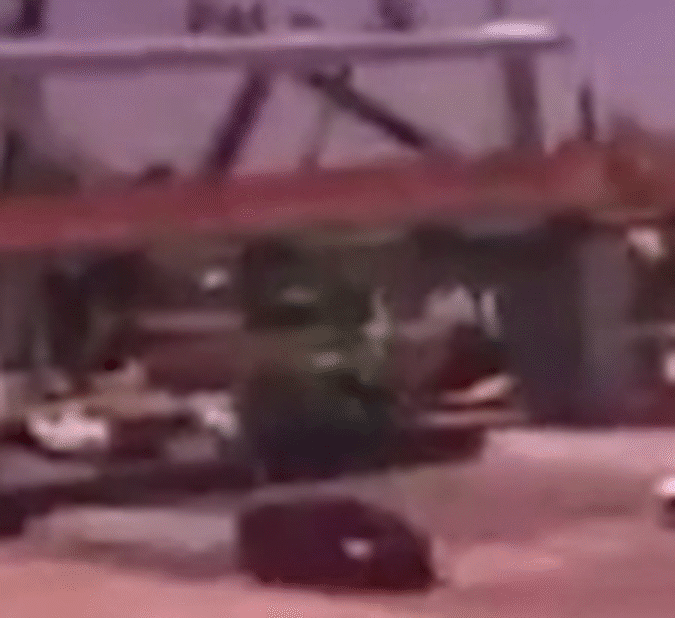nsaspook said:
It would also seem to make the bridge prone to single point catastrophic failure at anyone diagonal.
That is true, but it is only vulnerable during the construction phase before the stays are installed.
I am not a Civil Engineer. I am just fascinated by unexpected structural failures, but only so I can avoid them.
The car-cam video is slow frame rate, but examining the surveillance video of the failure shown on the news here gives a greater frame rate. It is subtle, but the upper plate appears to shudder and rock momentarily sideways, a slow wave then travels along the T top plate and is reflected back to the trigger point where the failure then occurs and where more complex waves form. That makes me think a tension cable snapped, triggering two waves, one towards each end of the bridge. Both waves were reflected efficiently from the open plate ends, the (standing wave) sum of the deflections then causing failure of the upper plate at the weakened point.
The design plans for the bridge show a (north, river end) tower with cable stays that line up with half the diagonals. Those cable stays had not yet been installed, so the structure needed to be temporarily carried during construction by a much greater compression in the top plate. Once stayed, the upper plate would not be under such a high compression and would then function as a cover over the suspended walkway. I believe that was the reason why during installation it was left “vulnerable to collapse”.
In my opinion, the I beam design did not sufficiently constrain the top plate to prevent buckling during construction. It was probably the failure of one off-centre cable, then a doubling of the amplitude by the standing wave formation that exceeded the top plate specifications. I suspect the dynamic doubling of the amplitude due to wave reflection would not have been considered when designing the top plate for construction.
It may go back to the beginning of the design when the “open look” of one central line of stays attracted attention to the prejudice of stability. If a box form had been used with two lines of stays, one on each side, the top plate could not have rocked. During construction, the one line of cable stays along the centre line allowed one too many degrees of freedom.
A good engineer will work out the strength requirement, then double it. But when reflected waves are involved, the deflection can double and so come back to bite the engineer. After the tragedy it is more important to identify the failure mechanism than it is to prosecute and punish. The engineers involved are also victims.
The emotive term “stress test” implies a deliberate approach to the point of failure. The adjustment of cable tension after the move would have been expected. That was probably what they were doing when the cable snapped and the stored energy in the structure was released.
I may be totally wrong, but it seems to me to be the simplest explanation of how such a tragedy might happen.
Stored energy will get you everytime.
 images?q=tbn:ANd9GcTOzPTZpJrB2wdiRq6LKNUjjPnI_0KGnBYtf7gzmtfiU-tV_Okx.jpg11.1 KB · Views: 665
images?q=tbn:ANd9GcTOzPTZpJrB2wdiRq6LKNUjjPnI_0KGnBYtf7gzmtfiU-tV_Okx.jpg11.1 KB · Views: 665 images?q=tbn:ANd9GcQI2rIHxFW-aMukScEHzCSD605Hp0Osns8g_GaograwKxaH83NI3Q.jpg14.5 KB · Views: 618
images?q=tbn:ANd9GcQI2rIHxFW-aMukScEHzCSD605Hp0Osns8g_GaograwKxaH83NI3Q.jpg14.5 KB · Views: 618 4A3B39D500000578-5507475-image-a-4_1521155232825.jpg64.4 KB · Views: 1,848
4A3B39D500000578-5507475-image-a-4_1521155232825.jpg64.4 KB · Views: 1,848 4A3B171A00000578-5507475-image-a-6_1521155254831.jpg45.9 KB · Views: 1,830
4A3B171A00000578-5507475-image-a-6_1521155254831.jpg45.9 KB · Views: 1,830








